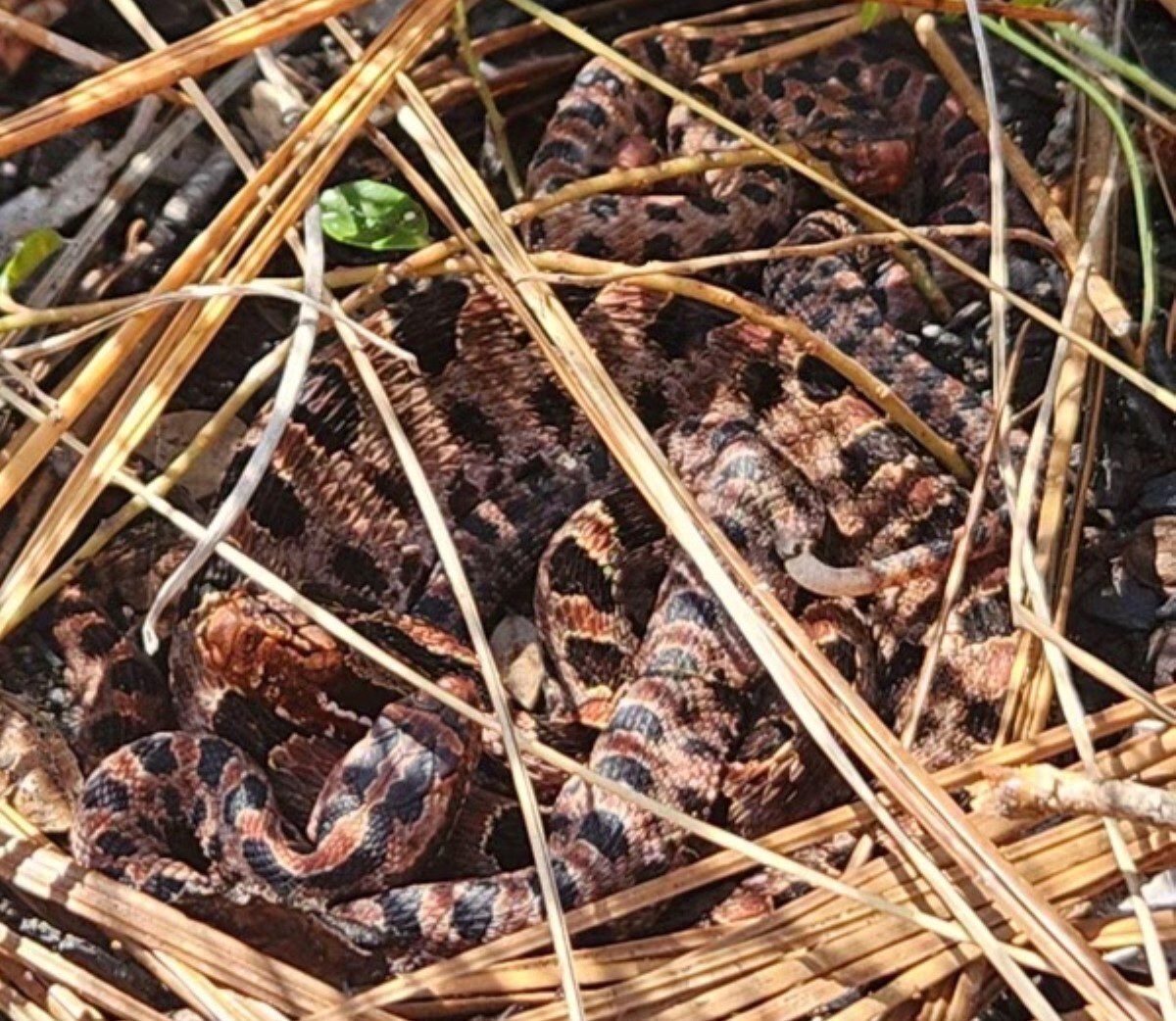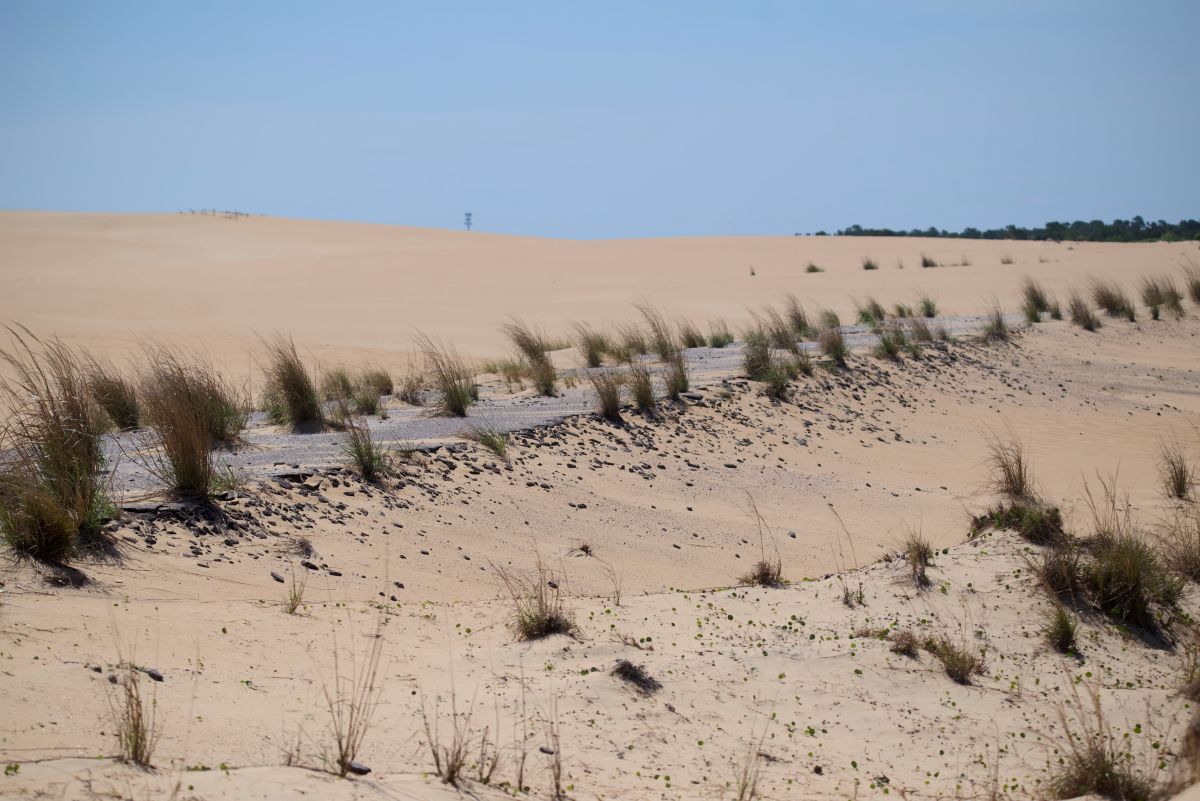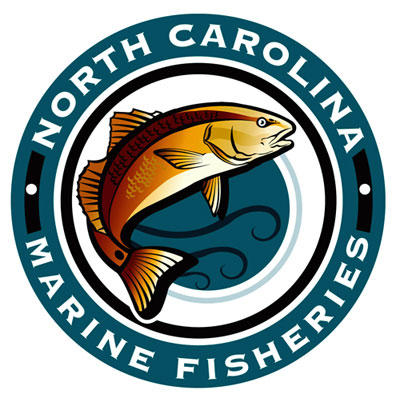Featured Image
The female pigmy rattlesnake in this photo by Daniel Murdoch was spotted with her hatchlings in the Newport area near Croatan National Forest.
Supporter Spotlight
Wildlife Resources Commission biologists request that if you see a snake, do not harm it, instead give it plenty of space, and if you see a pine snake or rattlesnake, report it.
“Snakes play crucial roles within ecoystems and help control the rodent, slug and insect populations,” Jeff Hall, reptile conservation biologist with the Wildlife Commission, said in a release about reporting snake sightings. “There are many ways to coexist with snakes, which is important because of 38 of North Carolina’s native snake species, ten are listed endangered, threatened or of special concern.”
The agency partners with the HerpMapper mobile app to track amphibian and reptile species. To report a sighting, download the app to your mobile device or tablet and enter information about your sighting. If reporting by email send a photo, the date and time the snake was observed and location to rattlesnake@ncwildlife.org.
The smallest rattlesnake species in the state, pigmy rattlesnakes give birth to up to nine babies in late summer or early fall, according to the North Carolina Wildlife Resources Commission. “Pigmy rattlers are rare but can be found in the southeastern Coastal Plain and in the Sandhills of North Carolina in pine flatwoods and scrub oak habitats. They have also been found at Crowder’s Mountain State Park in Gaston County.”
Of the six native venomous snake species, three are rattlesnakes. The pigmy, along with eastern diamondback and timber, are the three rattlesnake species in the state and are all protected under the North Carolina Endangered Species Act. The eastern diamondback is endangered and the timber and pigmy rattlesnakes are considered species of special concern because of declining populations.
Supporter Spotlight
“Public assistance in recording and documenting the pine snake will be a huge help, because it’s difficult to conserve a species when we don’t know all the places it occurs,” Mike Martin, wildlife technician with the Wildlife Commission, said in a release. “We are partnering with several organizations and agencies to conduct surveys in the areas where pine snakes have either been seen or areas with potentially good habitat.”
Contact Hall at jeff.hall@wildlife.org or 252-917-1683 for more information.








